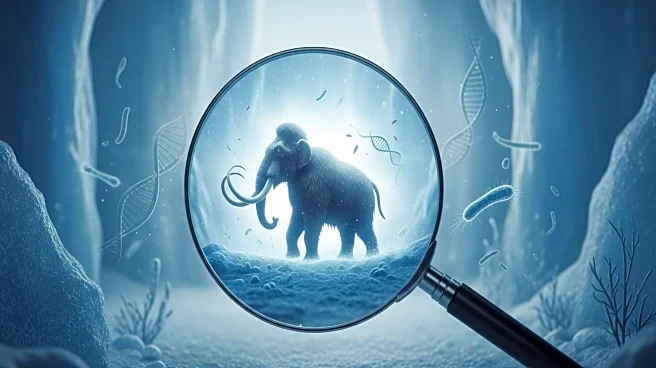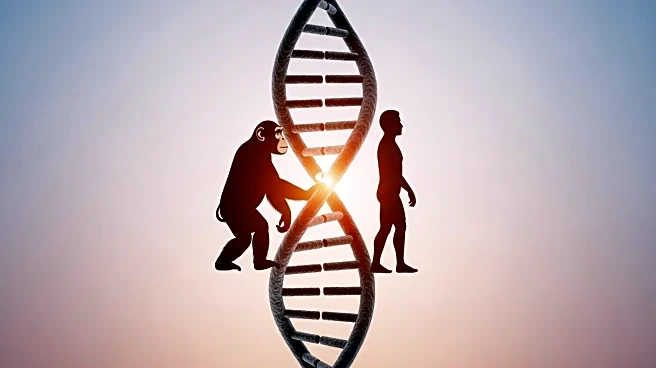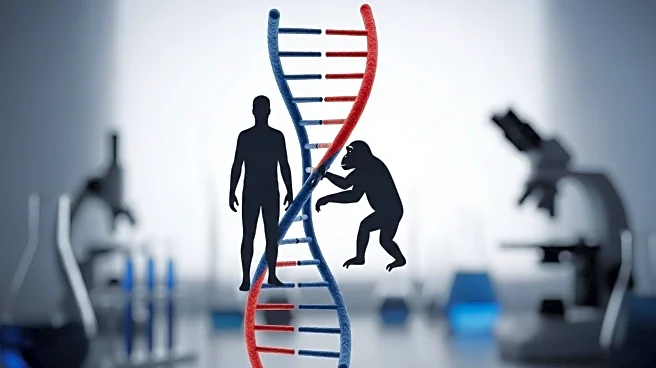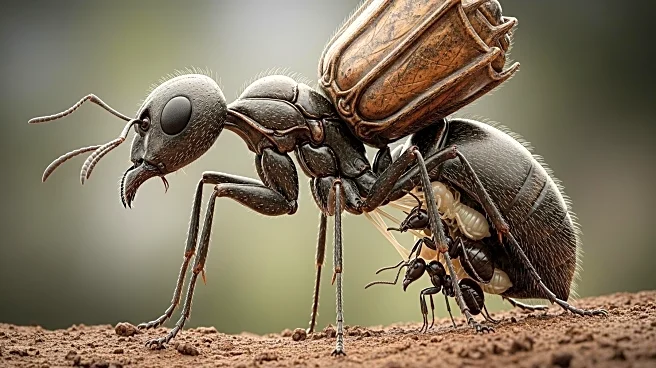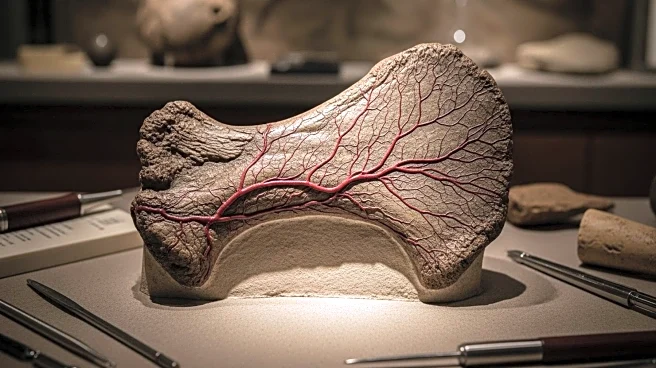What is the story about?
What's Happening?
Recent studies have uncovered million-year-old microbial DNA in mammoth remains, revealing new insights into the noncoding parts of DNA. Previously considered useless, these DNA segments are now understood to play crucial roles in gene regulation. Researchers have mapped out DNA switches, such as enhancers, silencers, and insulators, which control gene activity in human and mouse cells. These findings highlight the redundancy and security provided by these regulatory elements, ensuring gene function even when some switches fail. The research also involved CRISPR-based editing tools to test the impact of altering specific enhancers, demonstrating the cooperative nature of these elements in gene regulation. Additionally, microbial DNA from mammoths has been analyzed, revealing ancient bacteria that may have influenced mammoth health and survival.
Why It's Important?
The discovery of ancient microbial DNA and the mapping of regulatory DNA elements have significant implications for medicine and evolutionary biology. Understanding the role of noncoding DNA in gene regulation could lead to advancements in personalized medicine, allowing for earlier disease diagnosis and more targeted treatments. The research also provides insights into the evolution of species, as regulatory DNA differences may explain variations between closely related species like humans and chimpanzees. Furthermore, the ability to study ancient microbial ecosystems offers a deeper understanding of past environments and the factors that contributed to species survival or extinction.
What's Next?
Future research may focus on further exploring the regulatory DNA elements to develop more precise medical treatments and improve disease prevention strategies. The study of ancient microbial DNA could also enhance conservation efforts by providing insights into the historical interactions between species and their environments. Scientists may continue to investigate the cooperative nature of DNA enhancers and their role in gene regulation, potentially leading to breakthroughs in understanding genetic resilience and adaptation.
Beyond the Headlines
The findings challenge traditional views of DNA as merely a protein-coding sequence, highlighting its complex regulatory functions. This research underscores the importance of noncoding DNA in shaping life and evolution, suggesting that these elements may hold the key to understanding genetic diversity and adaptation. The study of ancient microbial DNA also opens new avenues for exploring the interconnectedness of life forms across time, offering a richer perspective on the history of life on Earth.
AI Generated Content
Do you find this article useful?





